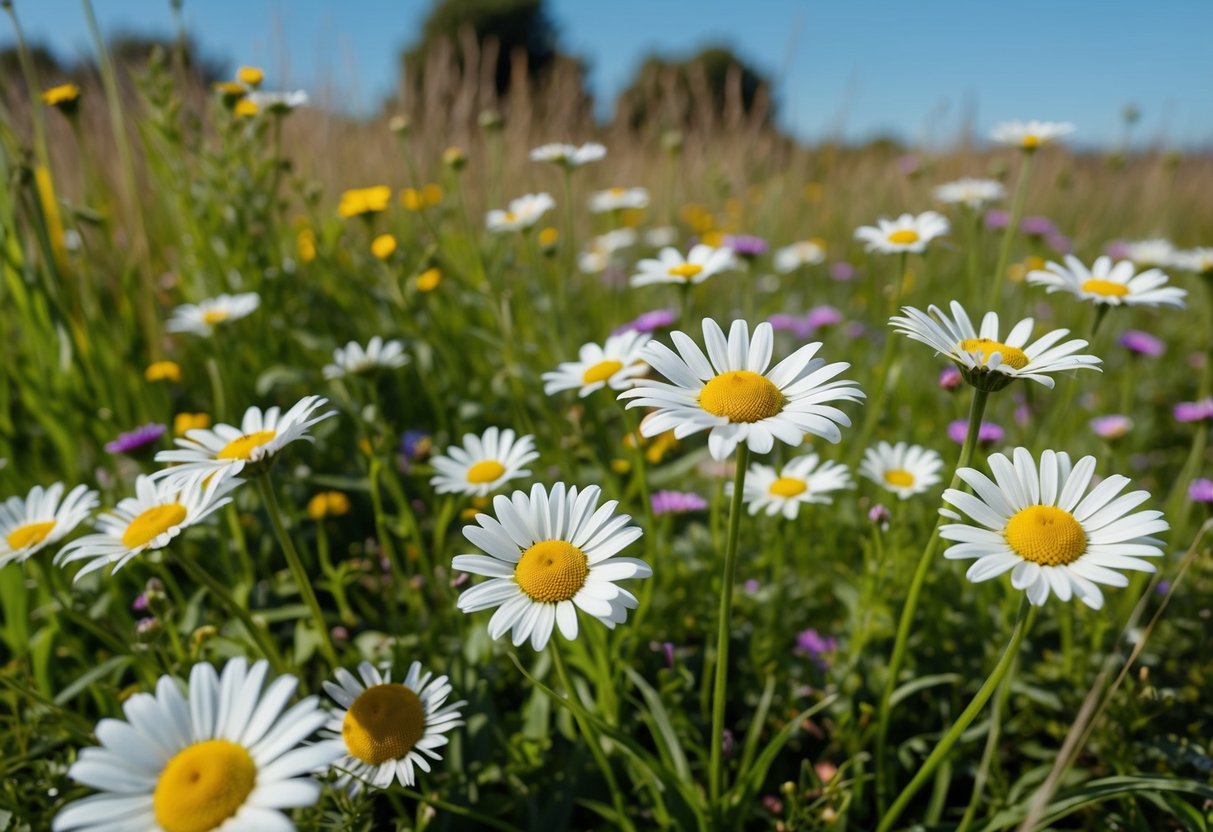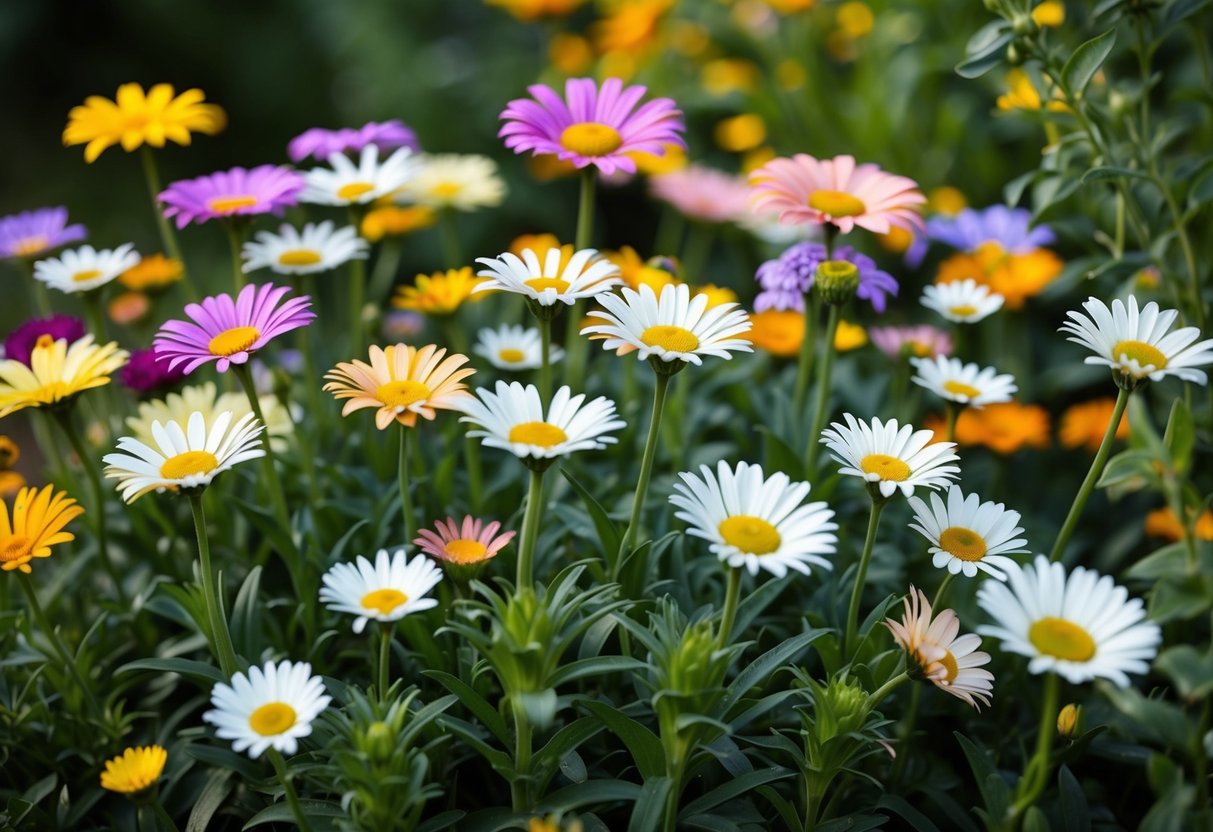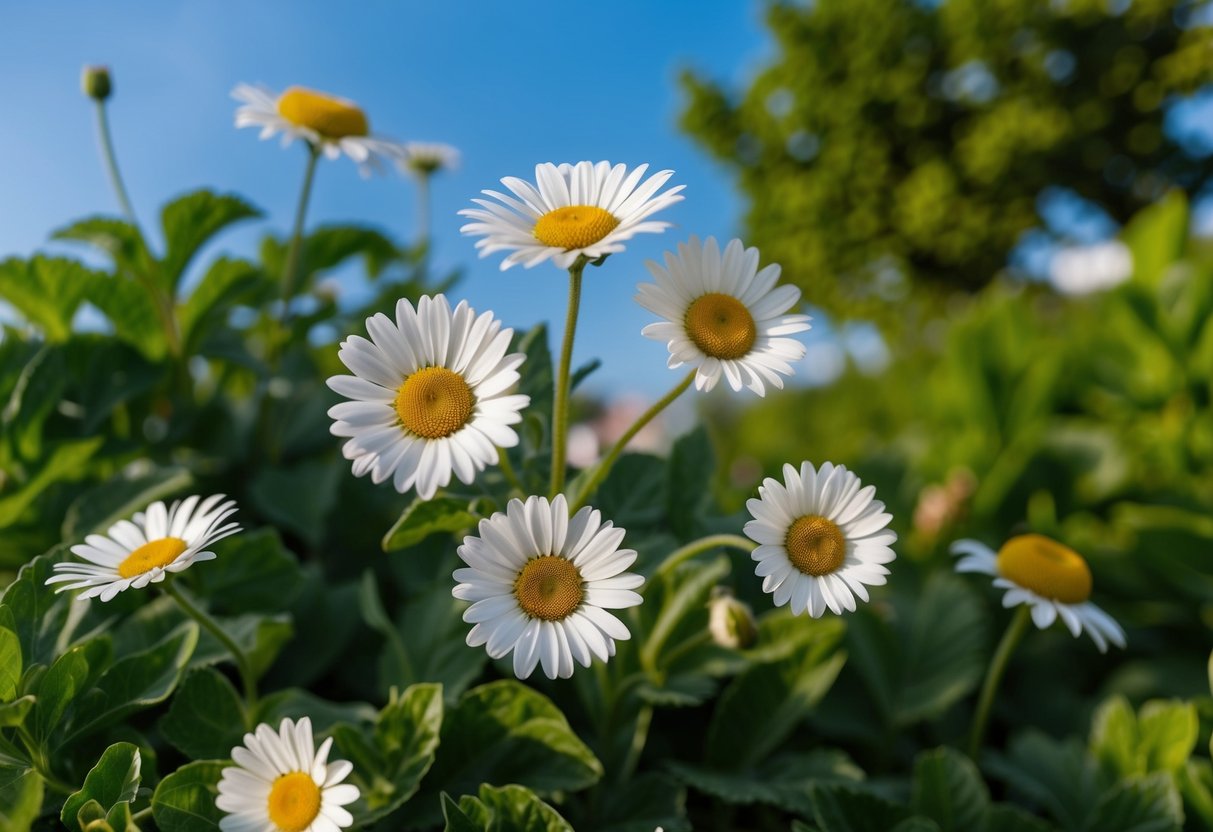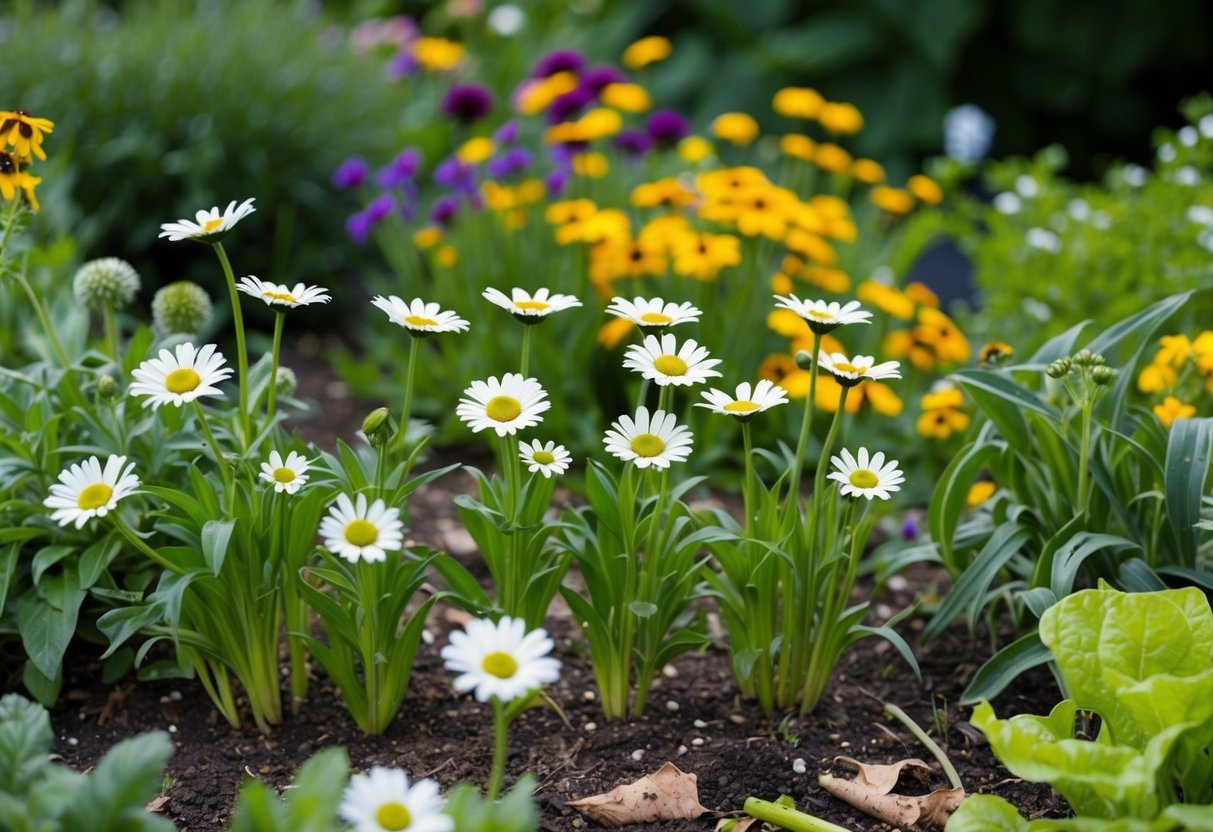Are Daisies Perennial or Annual? A Quick Guide to Their Growth Cycle
Daisies are charming flowers that can brighten up any garden with their simple beauty and vibrant colors. They belong to the Asteraceae family, which includes a wide variety of species. Most daisies are perennials, meaning they come back year after year, providing lasting beauty to your garden. However, some types are grown as annuals, which last for just one season and need replanting the next year.
Understanding whether your daisies are annual or perennial can help you plan your garden better. If you prefer low-maintenance gardening, look for daisy varieties that are perennial, like the classic Shasta daisy. Tender perennials, such as African daisies, may need extra care in colder climates. You can explore different types on Epic Gardening’s guide for more information.
Whether you’re a seasoned gardener or just starting out, deciding between perennial and annual daisies allows you to design a garden that suits your style and climate. You’ll find that daisies make an adaptable and delightful addition to your plant collection. For specific types of daisies you might want to grow, check out The Spruce’s list of 26 varieties.
Daisy Basics

Daisies are often recognized by their bright white petals and sunny yellow centers. Belonging to the Asteraceae family, these flowers add charm to many gardens.
Types of Daisies
- Perennials: Shasta daisies are popular and perennial, lasting more than two years.
- Annuals: Some daisies, like the marguerite, grow as annuals.
- Biennials: English daisies can be biennials.
Growth and Care
Daisies thrive in well-lit areas. They need moist soil but should not be overwatered. Regular deadheading encourages more blooms.
Light Needs: Full sun
Water Needs: Moderate
Soil Type: Well-drained, rich
You might plant daisies from seeds or cuttings. They’re versatile and can be used as borders or in flower beds.
Zones and Hardiness
When planning your garden, consider the hardiness zone for each daisy variety. For instance, Shasta daisies are hardy in zones 4 to 9, making them suitable for many regions. Marguerite daisies, on the other hand, are best in zones 10 to 11.
Types and Varieties of Daisies

Daisies come in many forms, each with unique characteristics. Understanding their types can help you choose the best ones for your garden’s needs and climate. Some daisies are hardy perennials, offering blooms year after year, while others are annuals or biennials, completing their life cycle in a single or two growing seasons.
Popular Perennial Daisies
Perennial daisies are a gardener’s favorite due to their longevity and low maintenance. The Shasta daisy (Leucanthemum x superbum) is well-loved for its large white petals and yellow centers. It’s great for summer displays.
The Ox-eye daisy is another perennial offering. It grows up to 20 inches tall and features classic daisy blooms. Meanwhile, the Nippon daisy, often called the Montauk daisy, has thicker leaves and flowers late in the fall, adding extended color to your garden.
The Gerbera daisy is also perennial in warm climates. Known for its bright and varied colors, it’s a popular choice in floral arrangements. Robust and lively, these daisies thrive with regular watering and good sunlight.
Annual and Biennial Daisies
Certain daisy varieties grow best as annuals or biennials, giving bursts of color for one or two seasons. The African daisy, or Cape daisy, offers striking hues like purple, orange, and yellow. It’s native to South Africa and does well in warm climates.
English daisies (Bellis perennis) can be grown as biennials in cooler zones. Their small, charming flowers are often used for ground cover. The Painted daisy is another annual that dazzles with its vibrant reds and pinks.
The Gloriosa daisy is technically biennial but often grown as an annual. Its flowers are golden and have a dark center, making them a standout in any garden. Lastly, the Marguerite daisy can grow year-round in warm climates, adding beauty to gardens with its delicate petals.
Planting and Care for Daisy Plants

Caring for daisy plants involves understanding their soil and watering needs, ensuring they get the right amount of sunlight, and keeping up with pruning. With the right steps, you can enjoy bright and beautiful daisies in your garden.
Soil and Watering Needs
Daisies prefer well-drained soil with a slightly acidic to neutral pH. To promote healthy growth, mix compost into the soil to boost its nutrient content. Using mulch can help retain soil moisture and reduce weeds.
Watering is crucial but should not be excessive. Water deeply once a week, allowing the soil to dry out between sessions. This helps prevent root rot, as daisies thrive in soil with good drainage. Avoid letting the leaves stay wet to prevent diseases.
Sunlight and Temperature Requirements
Daisies need plenty of sunlight, ideally full sun for at least six hours a day. They can handle partial shade, especially during hot afternoons. In very hot regions, make sure they have a bit of afternoon shade to prevent wilting.
These plants generally perform well in a variety of hardiness zones, though tender perennials might need additional care in colder climates. Watch the temperature and provide humidity control if needed, particularly when grown indoors.
Pruning and Maintenance
Regular pruning such as deadheading is key to keeping daisies blooming throughout the season. Deadheading spent blooms encourages new flowers and prevents the plant from going to seed too early.
To maintain shape and health, use sharp shears to trim back old growth during the growing season. Fertilizing with a balanced fertilizer every few weeks can support better blooms, but don’t overdo it, as too much can lead to leafy growth instead of flowers.
Keep an eye on any pests or diseases, treating them promptly to keep your daisies healthy. If potted, consider repotting every couple of years to refresh the soil and give the roots more room to grow.
Understanding the Flowering Cycle

Daisies have a fascinating flowering cycle that keeps them as garden favorites. You can enjoy their bright bloom time during spring to fall. Many types of daisies offer a long-lasting bloom which means you can have your garden looking lively for months.
Daisies often come in a wide range of flower colors. From classic white and yellow to pinks and reds, there’s a color choice for every garden. These colorful blooms are perfect as cut flowers, brightening up any room in your home.
In certain climates, daisies can be self-sowing. This means they spread their seeds naturally, bringing new flowers without much work from you. The seeds can sprout into sturdy plants that continue to offer stunning blooms each year.
When planning your garden, consider the bloom time of different daisy varieties. Some may start early in the season, while others peak in late summer. Mixing varieties can ensure that your garden has vibrant flowers throughout the growing season.
Managing Pests and Common Problems

When caring for daisies, it’s important to keep an eye out for pests and diseases that can affect their growth. Learning how to manage these issues will help your plants thrive and bloom beautifully.
Protecting Against Pests
Daisies can sometimes attract pests like aphids and slugs. Aphids are small insects that suck the sap from plant stems and leaves. You can identify them by their soft bodies and they often leave behind a sticky residue. To get rid of aphids, try using insecticidal soap or a gentle spray of water.
Slugs are another common pest that loves to munch on daisy leaves. You might notice slime trails or holes in the leaves if slugs are present. To manage slugs, consider setting up traps or using barriers such as crushed eggshells around your plants. Keeping the area around your daisies dry can also help deter slugs.
Dealing with Diseases and Growth Issues
Daisies are generally hardy but can get diseases like powdery mildew. This fungal disease appears as white, powdery spots on the leaves. To prevent it, ensure your daisies are not overcrowded and have good air circulation. You can also remove any affected leaves to stop the spread.
Another common problem is poor growth, which is often due to lack of nutrients or sunlight. Make sure your daisies get at least 6 hours of sunlight daily. During the growing season, feed them with balanced fertilizer. Avoid overwatering, as it can lead to root rot and other issues. A well-draining soil is essential for healthy plants.






